When it comes to nutritious food, you can't beat seasonal produce. Every month of the year brings with it a new offering of nutrient-dense veggies and fruits, as well as meat and seafood. Find out what seasonal foods to cook with your Instant Pot in March to lock in the most flavor and nutrients.
We have a series of posts featuring seasonal recipes with your Instant Pot for each month of the year. We're covering the most common seasonal ingredients in the northern hemisphere and how they can be used in pressure cooking. Of course, not all seasonal foods are fit for this cooking method, so we're choosing those that are great to prepare with your Instant Pot pressure cooker.
What's In Season In MARCH
artichokes
Artichokes are a stunning vegetable making them perfect for an impressive side dish to serve up for guests. Look for tightly closed leaves, instead of the ones that are open. If you notice black/brown patches of discoloration on outer leaves, this is only a symptom of frost damage, which is harmless. Use them within three to five days of purchase and keep refrigerated in a loose-fitting paper bag to minimize moisture. You can briefly soak artichokes in lukewarm water with a teaspoon of salt or vinegar to help draw out any trapped insects or unwanted debris.
Artichokes can be cooked whole until tender by boiling, steaming or baking. Extracting the meat from within each leaf requires trimming the tips of the outer leaves. To reduce discoloration simply place the trimmed artichoke in a bowl of lemon water. Artichokes can be frozen after cooking (but not raw). They are also delicious when stuffed between leaf layers.
The artichoke is the fourth most antioxidant-rich food per serving, after blackberries, walnuts, and strawberries. Due to cynarin found in the leaves, studies have shown its potential to lower blood cholesterol, stimulate the flow of bile from the liver and gallbladder. It’s the most phytonutrient-dense of all the vegetables studied.
Vegan Instant Pot Mac and Cheese with Artichokes
Stuffed Artichokes from Instant Pot Official
Asparagus
Asparagus comes in four varieties: green, white, purple and wild. The most common in the US is green asparagus. It varies in width and length but tends to be sold at around 8–10 inches. Its flavor is mildly sulphuric, mostly sweet and slightly nutty. Avoid limp and wilted ones. Look for the thinnest stalks possible since these are the most tender. It's food to try to find a bunch that has uniformed width so they cook consistently.
You can preserve asparagus by trimming the ends of the stalks and standing the bunch in a cup of water in the refrigerator. The most important thing about preparing asparagus is not to overcook them. After blanching, you can then freeze them. Asparagus has healthful properties such as folate, Vitamin C, potassium, inulin, anti-oxidant and anti-inflammatory properties. It has been used medicinally as a laxative as well.
Instant Pot Asparagus with Garlic, Lemon & Pepper
Instant Pot Asparagus & Fennel Risotto
Instant Pot Asparagus Soup from Piping Pot Curry
broccoli
As a kid, didn't you think broccoli looked like little trees? While they didn't seem apetizing after they were cook, they were still fun to play with. Most people toss the stems and only eat the pretty tree-like part. But don’t toss the stems. Roasting softens and sweetens the stems.
Florets of the broccoli should be tightly closed and deep green. Avoid limp or yellowing broccoli. Keep moisture to a minimum in the refrigerator by loosely wrapping them in a plastic bag or dish towel, and then use within a few days. You can preserve them by separating the stalks from florets and parboil for three minutes, then shock them in an ice-water bath. After drying you can store in freezer bags.
Broccoli is packed with disease-fighting antioxidants. One cup of cooked broccoli has five grams of fiber, nearly four grams of protein, plus Vitamins A and C, all at just 55 calories. It contains folate, iron, potassium, omega-3 fatty acids. It has a unique combination of phytonutrients doing anti-inflammatory, antioxidative and detoxifying work. It’s been studied for its potential in treating various degenerative conditions, skin damage, stomach ulcers, and adult blindness.
Instant Pot Broccoli with Lemon & Garlic
Instant Pot Quinoa with Broccoli and Cheese
Instant Pot Broccoli Soup with Gremolata
Brussels sprouts
Brussels sprouts resemble baby cabbages and are so versatility in recipes with their soft, sweet and earthy taste. When purchasing, look for compact heads and bright green. Avoid any with pinholes, that can be a sign of pests. Brussels sprouts are sold on and off the stalk.
Brussels sprouts will last in the refrigerator for about two weeks when stored on the stalk and about half that if separated from it. To freeze sprouts, blanch by dipping briefly in a pot of boiling water, shock in cold water, pat dry and freeze for up to a year. They are great raw thinly sliced in a salad or roasted. Be careful not to overcook Brussels sprouts. Too long on the stove and the sprouts will release a sulfur smell.
Brussels sprouts are high in Vitamin C and Vitamin K, which is valued for its anti-inflammatory properties. They are a good source of folate, manganese, Vitamin B6, dietary fiber, choline, copper, Vitamin B1, potassium, phosphorus, and omega-3 fatty acids.
Instant Pot Brussels Sprouts with Bacon & Garlic
Instant Pot Bangin' Brussel Sprouts from Pressure Luck Cooking
Instant Pot Creamy Brussel Sprouts from Diethood
Cabbage
Cabbage is a rich source of vitamin C and vitamin K amongst other nutrients. It's another vegetable high in fiber, which is why raw cabbage can sometimes cause a bit of flatulence. Nevertheless, it has many health benefits and research suggests that cruciferous vegetables, including cabbage, may have protective effects against cancer.
Cabbage is prepared and consumed in many ways from raw salads such as coleslaw to braised dishes such as cabbage rolls and cabbage soup. Pickling is one of the most popular ways of preserving the cabbage, creating dishes such as sauerkraut and kimchi. Cabbage is great for pressure cooking as it can withstand high temperatures quite well and for many dishes, it requires longer cooking times. Braised cabbage dishes, stews, and soups with cabbage are best suited to the Instant Pot, however, you can also use the Sauteé function to stir-fry thinly sliced cabbage in some butter and garlic for a simple side dish.
Sri Lankan Coconut Cabbage
Unstuffed Cabbage Bowls from Skinny Taste
Borscht (Beet Soup)
cauliflower
Cauliflower is technically an edible flower. The head of cauliflower is known as the curd. Look for an even color and a tightly packed head. Cauliflower comes in purple, orange and green varieties, while white is the most common. Cauliflower will keep for a few weeks if kept dry and covered in the refrigerator. But if it is left uncovered it will start to wilt in a few days.
Roasting, boiling and braising are some of the ways to prepare cauliflower. It's gained popularity due to providing alternatives to certain dietary restrictions. It's a great option for vegan dishes or dairy-free dishes to make creamy soups. It's a perfect substitute for rice for those with a gluten intolerance. Cauliflower freezes well if you break the head into individual florets. One cup of raw cauliflower provides 85 percent of your daily recommended amount of Vitamin C. It is also high in folates, Vitamin K, and Vitamin B-6.
Instant Pot Cauliflower Recipes
Instant Pot Mashed Cauliflower from Champagne Tastes
Leeks
Common leeks kind of look like a giant scallion. Leeks were probably first cultivated by the Egyptians, who liked leeks so much they painted their tombs with images of them. They have a straight, white stem that gradually becomes lighter green, making way to the dark, almost blue-green of the top leaves. Seek out leeks on the smaller side, one to two inches in stem diameter, three inches tops. Larger leeks tend to get woody and a bit tough. Leek greens should be very dark green with no yellowing or wilted spots. The white stem should be very white and firm with no black, mushy or discolored areas.
Leeks have a mild onion, sweet flavor. Most recipes call for only the “white and light green parts” of the vegetable, but the dark green leaves can be saved to use in stock making (veggie, beef, chicken, etc.). Leek stems can be braised, grilled, roasted, fried, steamed, sautéed and used raw in salads. They also pair well with dairy products. Leeks will keep in your veggie drawer, wrapped in a paper towel, for at least a week. Don’t wash leeks before you refrigerate them, as this accelerates their decline.
The thing about preparing leeks is that they are really dirty, with gritty bits of sand frequently hidden in the layers that make up the stems. They have to be cleaned very thoroughly (good description of how to clean leeks, or here is a great video that shows two different techniques for cleaning the veggie). Leeks are very high in Vitamins A and K and are good sources of Vitamin B-6, folate, iron, calcium and manganese. They are also high in fiber and low in calories. Leeks are toxic to dogs and cats, so keep them (and their Allium relatives) away from your furry friends.
Instant Pot Scalloped Potatoes & Leeks
Instant Pot Brothy Farro with Sausage and Leeks from Epicurious
Mushrooms
Edible mushrooms vary in size, shape and color. There are so many types around the world and so versatile in use for recipes. From the most common being the white button kind on a pizza to the large portabello kind that can be a vegetarian alternative to a burger. Look for fresh mushrooms without slimy, moldy or black spots. Fresh mushrooms don’t store well. They can last three to four days.
While different mushroom varieties have slightly different nutritional compositions, most are quite high in riboflavin (Vitamin B2), niacin (Vitamin B3) pantothenic acid (Vitamin B5), and also contain some minerals, like copper, selenium, phosphorous and potassium. They even have a bit of protein and iron. Mushrooms have been used medicinally by cultures all over the world. Shiitakes may be beneficial to the immune system and help lower cholesterol; button mushrooms have potent antioxidant properties; some hallucinogenic mushroom compounds may help alleviate depression.
Instant Pot Chicken Mushroom Stew
Instant Pot Pork Chops with Creamy Mushroom Sauce
Instant Pot Miso Quinoa with Mushrooms and Peppers
Peas
Peas are a type of legume native to the Middle East, specifically to the area around what is now Turkey and Iraq. From the Middle East, the legume spread rapidly to Europe. The pea was an important source of food for peasants in the Middle Ages, providing protein and other nutrients in lean times.
Snow peas and sugar snaps are often used in stir-fries, pairing with garlic, sesame oil, and soy sauce. Sugar snaps are also pretty excellent raw. Pea shoots and tendrils can be eaten like a green braised in a little bit of liquid, or sautéed, or tossed, raw, into salads. Dried peas (split peas) tend to break down quite a bit when cooked so they are great for Split pea soup using a chunk of a ham hock with the peas while the soup cooks.
When shopping for garden peas, look for pods that are plump and bright green, with no wilted or brown spots. All parts of the pea plant are edible from the shoots, tendrils, and leaves, flowers, pods and, of course, the seeds (the peas themselves). Fresh peas in the pod will keep for at least a week in the produce drawer of your refrigerator. They will get starchier and less sweet the longer you wait to cook them. Even after a longer period of time, when the pods look a little gnarly, the peas inside are usually okay.
Every variety of pea is really good for you. Garden peas are higher in calories than most other veggies and are rich in fiber and protein. They also have huge amounts of Vitamins C, A, K and folate, and are high in manganese, iron, zinc and magnesium. They even contain a little bit of calcium. Dried peas (aka split peas) have even more protein and fiber than fresh peas, and contain more folate and potassium than fresh. Snow peas and sugar snaps have a large amount of Vitamin C — just one cup provides you with 128 percent of your daily Vitamin C needs. They’re also super high in Vitamins A and K and are good sources of iron and Vitamin B6.
Peas were key to the creation of the modern science of genetics: Gregor Mendel, an Austro-Hungarian monk, conducted the very first experiments on the inheritance of traits in pea plants, which lead to the formation his theory of inheritance, which basically forms the basis of all of genetics.
Instant Pot Curry With Mushroom & Peas (Matar Mushroom)
Instant Pot Yellow Rice With Peas & Corn
Instant Pot Risotto With Pea & Celery (Quick & Easy)
pineapples
When you think of pineapples, you instantly feel the warm sun on your face. Yes, summer and tropical bbq tiki parties are an instant pairing with this beloved fruit. You can't miss its spiky leaves in the produce aisle of the supermarket. To make sure you buy a ripe one, inspect the base of the fruit and take a big whiff. It should smell sweet. When pressed with your thumb, a ready-to-eat pineapple should give a little. You can even tug on a leaf from the crown and if it yields easily, the fruit is ready for the table. Pineapple on the kitchen counter will decompose more quickly than if stored in the refrigerator. Once peeled and trimmed, fresh pineapple must be stored in the refrigerator where it will keep for three to five days in an airtight container.
Cooked pineapple lets the natural sugars release. Pineapple upside-down cake and baked ham with pineapple glaze are popular choices. One cup of raw pineapple offers more than the daily recommended amount of Vitamin C (105 percent). It’s also rich in manganese and Vitamin B1, all of which offer antioxidant protection and immune support. A good source of fiber and folate, pineapple is also a unique source of bromelain, a protein-digesting (and tenderizing) enzyme with potential anti-inflammatory benefits. Bromelain is linked to treating muscle aches and other sports injuries, intestinal distress and pain relief for shingles. One cup of peeled pineapple chunks contains about 82 calories.
Instant Pot Chicken Tacos with Pineapple Salsa
Instant Pot Pineapple Chicken from Sweet and Savory Meals
Instant Pot Pineapple Jam from The Belly Rules The Mind
Sweet Potatoes
Most sweet potatoes are large and football-shaped, with a fat middle and tapering end. But they also come in a rainbow of colors, shapes, and sizes including orange, yellow, creamy white or even purple-magenta. After sweet potatoes are harvested, it can take up to eight weeks of curing and storage after harvest before sweet potatoes sweeten and develop the texture most are accustomed to.
Sweet potatoes can be stored for several weeks in a cool, dry and away from light. Don’t store them in the refrigerator, as this accelerates their decline — they don’t like to be too cold or too moist. Sweet potatoes that get too warm tend to sprout and become shriveled and mushy. Sweet potatoes are great because they can play any role in a meal from side dish to the main course to dessert. Since they can be baked, roasted, boiled, fried, grilled, mashed or pureed.
Sweet potatoes are good for you, especially varieties with orange or purple flesh. They contain truly awesome amounts of Vitamin A — between 500 percent and 700 percent of your recommended daily intake in just one cup. (Vitamin A is a vitamin necessary for eye, immune system and skin health, and is also a powerful antioxidant.) Sweet potatoes also contain fiber, excellent amounts of Vitamins C and B-6, manganese, potassium, and several other vitamins and minerals. They are even good sources of iron and calcium. Sweet potatoes are also thought to be helpful in blood sugar regulation and have been used as a natural treatment against intestinal parasites because of Vitamin A (beta-carotene).
Instant Pot Chicken & Sweet Potatoes
Instant Pot Sweet Potato Tortilla Soup
20 Scrumptious Instant Pot Sweet Potatoes Recipes
For a full list of what’s in season in March in the USA, check out this post: What’s In Season Around the Country: March


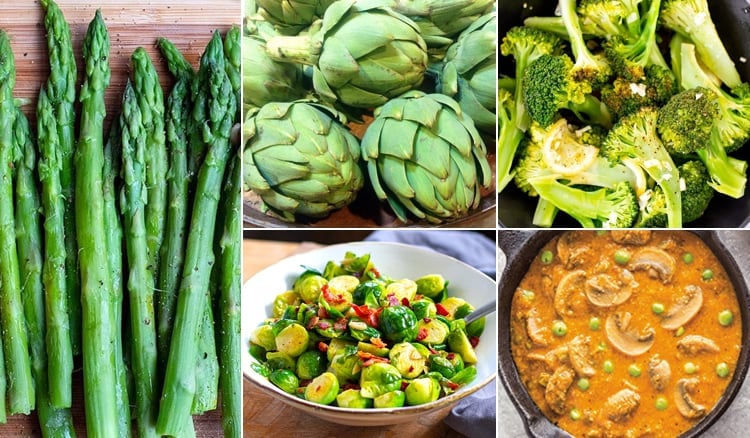
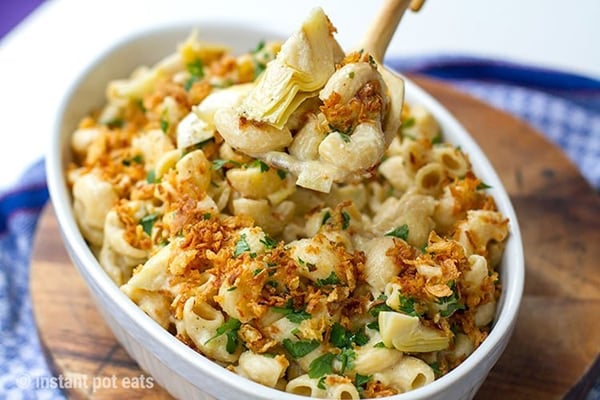
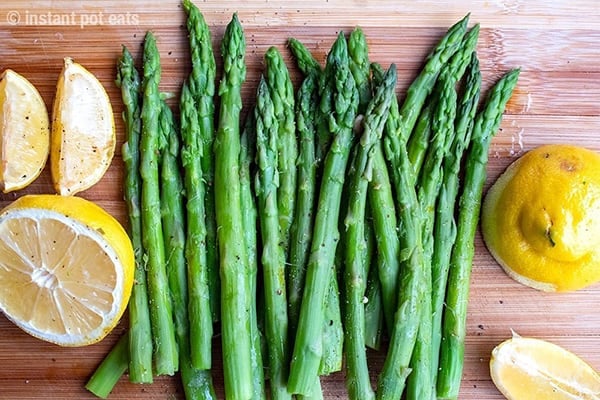
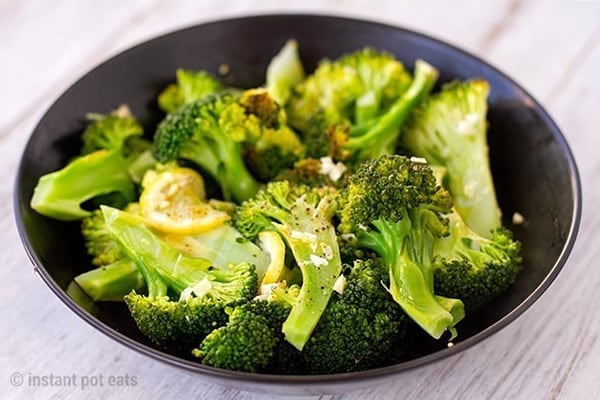
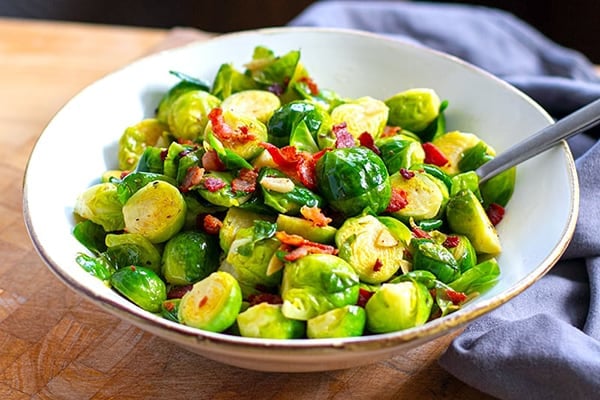
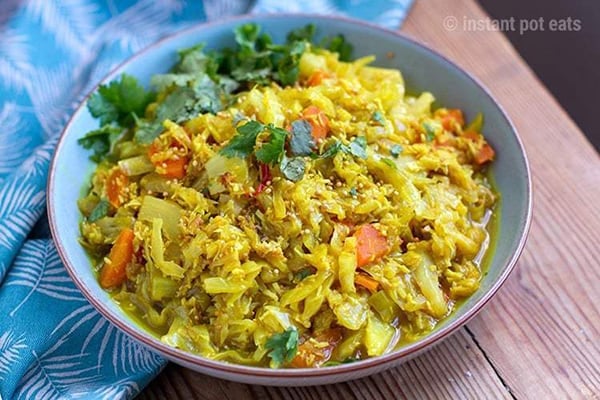
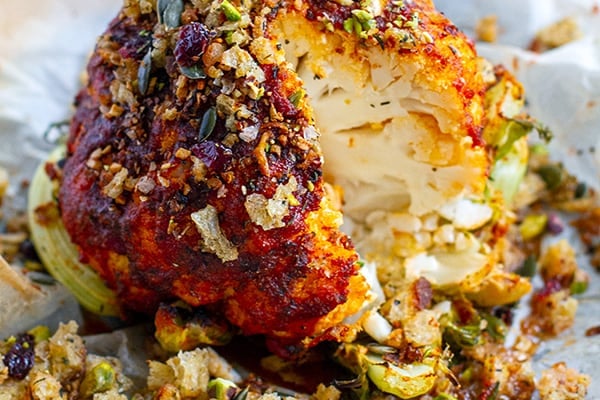
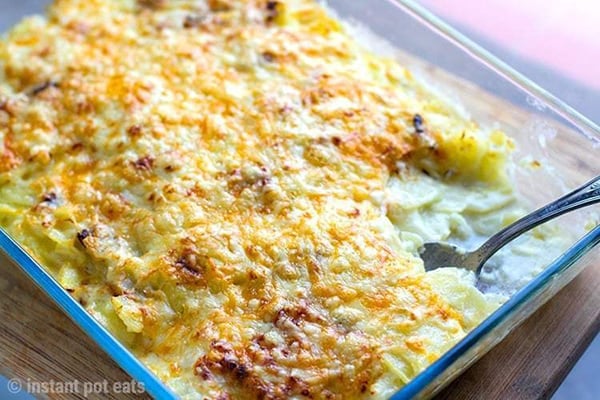
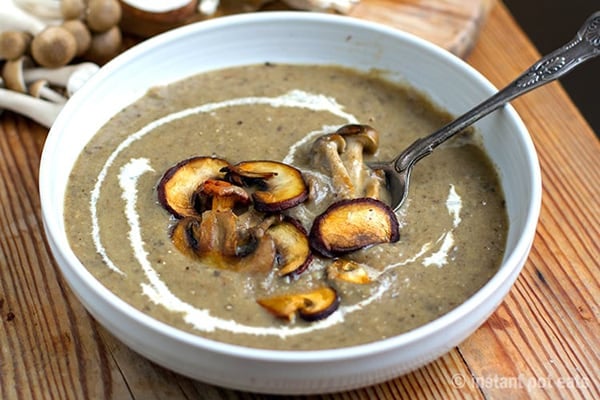
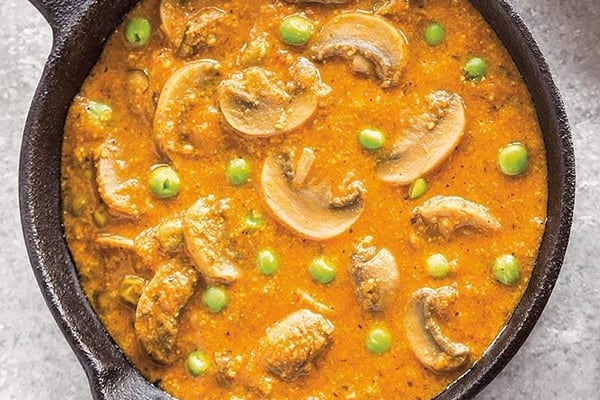

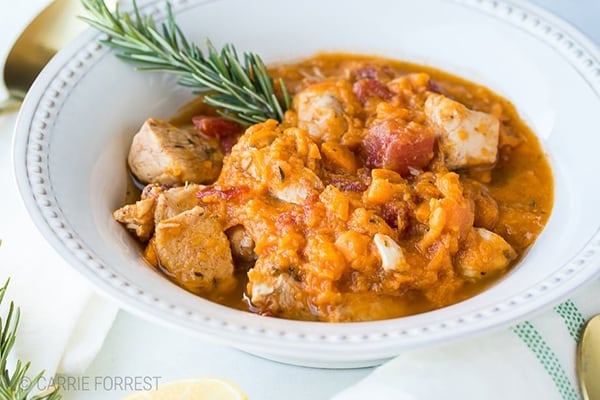
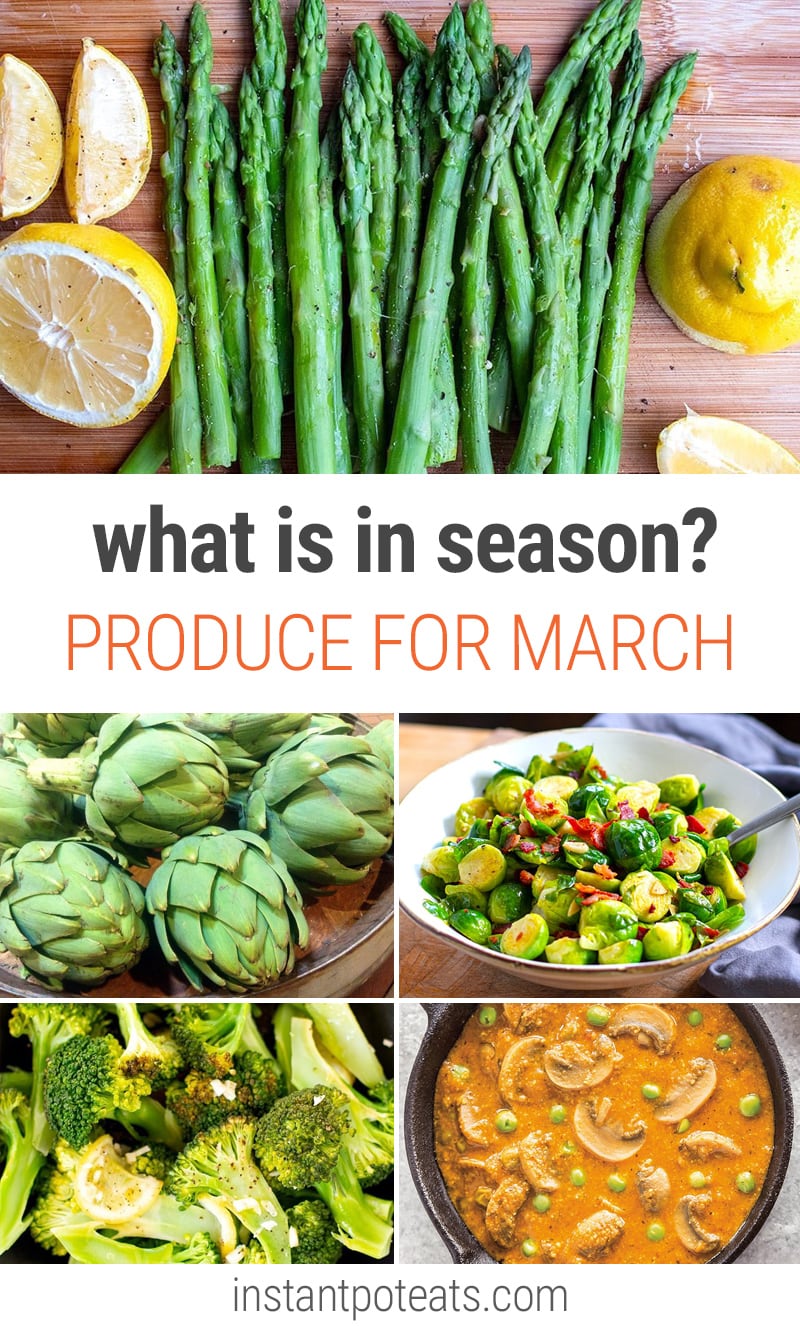




Leave a Reply